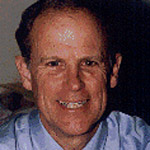
John Milliman
Faculty Emeritus
Retired:
2013
Department:
Physical Sciences
Email:
[[milliman]]
Phone:
(804) 684-7112
Interests:
Flux and fate of sediment in oceans - both river derived and calcium carbonate; economic and societal implications of natural and anthropogenic changes.
Office:
Andrews Hall 231
Department:
Physical Sciences
Education
- B.S., University of Rochester
- M.S., University of Washington - Seattle
- Ph.D., University of Miami
Research Interests
My research interests center on the flux and fate of sediment in the ocean. In practice this involves the study of both river-derived sediment (the single greatest source of sediment in the oceans) and calcium carbonate. Research has included the study of such diverse areas as rivers and their estuaries (ranging from the Amazon River down to rivers orders of magnitude smaller) to carbonate environments on tropical banks and shelves. This research has involved a variety of techniques and approaches, such as timeseries measurements within estuaries, high-resolution seismic profiling of the late Quaternary geological record, and the petrographic study of carbonate sediments and their cements. Recently my studies have included armchair reviews and synopses of fluvial and carbonate systems and their budgets.
In recent years these studies have led me to investigate the societal and economic implications of natural and anthropogenic changes on sedimentary systems, both on local and global scales. For example, what is the impact on a low-lying area from a relative rise of sea level, when a river is diverted or fringing coral reefs effectively stunted? Ultimately answering these questions can involve an interesting series of studies that can lead to unexpected scientific results as well as societal implications.
Current Projects
- Geological development of the Gulf of Papua clinoform, Papua New Guinea (National Science Foundation)
- Late Quaternary history of East Asian Seas (Office of Naval Research)
Selected Publications
- Milliman, J.D. and Haq, B.U., 1996. Sea-Level Rise and Coastal Subsidence: Causes, Consequences and Strategies. Kluwer Publ., Amsterdam. 369 p.
- Milliman, J.D., 1997. Blessed dams or damned dams? Nature, 386, 325-326.
- Milliman, J.D., Farnsworth, K.M. and Albertin, C., 1999. Flux and fate of fluvial sediments leaving large islands in the East Indies. J. Sea Res. (Netherlands), 41, 97-107.
- Farnsworth, K.L. and Milliman, J.D., 2003. Long-term fluvial sediment delivery to the ocean: effect of climatic and anthropogenic change. Global Planet. Change, 39.
- Warrick, J.A. and Milliman, J.D., 2003. Hyperpycnal Sediment Discharge from Semi-Arid Southern California Rivers - Implications for Coastal Sediment Budgets. Geology, 31, 781-784.
- Liu, J.P., Milliman, J.D., Gao, S., and Cheng, P., 2004. Holocene Development of the Yellow River's Subaqueous Delta, North Yellow Sea. Marine Geology, 209, 45-67.
- Dadson, S. et al., 2004. Earthquake-triggered increase in sediment delivery from an active mountain belt. Geology, 32, 733-736.
- Milliman, J.D. and Kao, J.S.. 2005. Hyperpycnal discharge of fluvial sediment to the ocean: Impact of Super-Typhoon Herb (1996) on Taiwanese rivers. J. Geol., 113, 503-516.
Current Students
- Kehui Xu (PhD)
Past Students
- Nicole Scott (MSc, 1995)
- John Galler (MSc, 1998)
- Megan Bollen (MSc, 1999)
- Katherine Farnsworth (PhD, 2002)
- Jing-pu Liu (PhD, 2003)
Courses Taught/Teaching
- Marine Geology (MS 522) 2000, 2002, 2004
- Rivers: Processes and Problems (MS 550) 1997, 1999, 2001, 2003, 2005
Faculty/Student Awards
- Francis P. Shepard Award for Excellence in Marine Geology, 1992 Outstanding VIMS researcher, 2003
Professional Memberships
- American Geophysical Union
Collaborative/Interdisciplinary Efforts
-
Gulf of Papua Studies - with Neal Driscoll (Scripps) and Rudy Slingerland (Penn State Univ.)
-
East Asian Studies - with Jing-pu Liu (North Carolina State Univ.), Li Anchun (Academia Sinica, Qingdao, China), Yang Zu-sheng (Ocean University, Qingdao, China), Gao Shu (Nanjing University, China), Kao Shuh-ji (Taiwan Academy of Science, Taipei), Lin Saulwood and Liu Charshine (National Taiwan University), Yoshiki Saito (Geological Survey of Japan, Tsukuba)
